Planning & Preparation: 1st Time Around
Planning for such a voyage is about leaving as little as possible to chance, about anticipating Murphy (and Eeyore?) and trying to think through every potential disaster to its worst possible outcome and then making the hard decisions. This becomes a list – and then a list of lists of things to do and stuff to get.
The list below more or less covers the obvious preparations for the first circumnavigation.
The logistics of first racing to Hobart and then loading the boat for a circumnavigation needed several more lists and then there were long term considerations such as making sure we could enter the Fastnet Race if we made it that far.
See also: Lessons Learned: What Worked and What Did Not
|
|
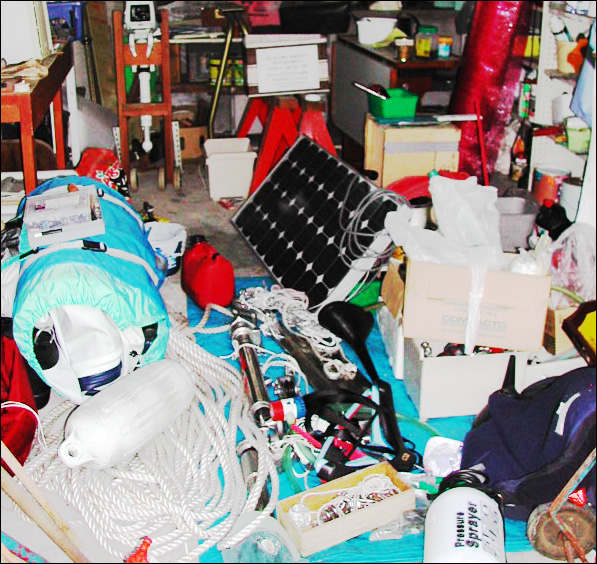
|
Hull & Steering
- Boat slipped Aug 04, hull fully checked by shipwrights, through-hull fittings and rudder bearings checked (boatmate…)
- New stern tube and gland fitted (fletcher…)
- New skeg bearing and prop shaft fitted
- Feathering propellor (Kiwi Prop: www.kiwiprops.co.nz). removed and serviced
- Fleming Self Steering windvane fitted and tested (www.flemingselfsteer.com).
|
|
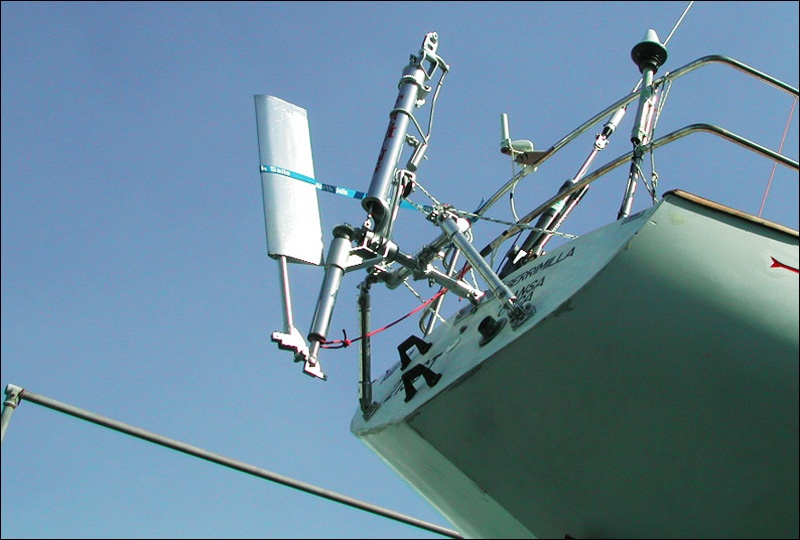 - First purchase is Fleming windvane – no going back!
|
Rig, Sails & Engine
- Mast unstepped July 04, fully checked & serviced in workshop, reinforced from gooseneck to above halyard entry slots (info@yachtserv.com )
- All standing rigging replaced with oversized s/s wire,
- Outer forestay for twin poling fitted
- Lightning conductor fitted on masthead and connection from mast heel and ring frame to moonraker plate under hull
- Chainplates, frame and step checked
- The engine was installed in 1998 and had done about 1300 hours since. It has been fully serviced and maintained by the manufacturer/supplier (Witchard Marine, www.wm-marine-diesel.com) , all consumables, filters, impellers etc replaced regularly. The last service was carried out in August 04 and checked again before departure in December.
- Boom brake fitted and tested
- New stainless steel fuel tank fitted
|
|
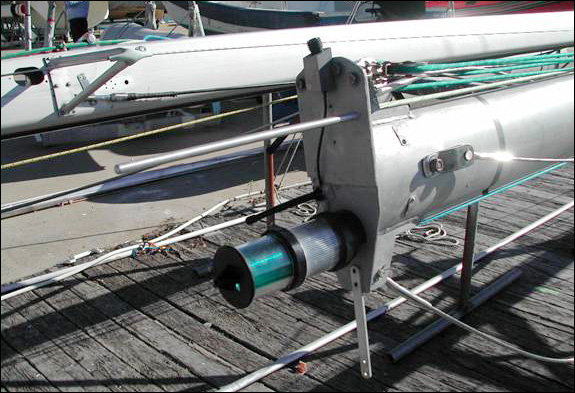 |
Electrical systems & Power supply
- Boat rewired throughout, July 04 (Marty Andersen, andersenmarine@yahoo.com.au Royal Prince Alfred YC, Pittwater, +61 2 9979 6160), all wiring labeled and coded
- New VHF aerial and cabling
- Starter and house batteries load tested
- New switch panel installed
- New masthead and deck/steaming lights
- LED globes installed wherever possible
- Solar panel: BP Solar 585U (www.solartech.com.au ) crystalline silicon photo-voltaic panel and regulator fitted (approx 4.5 amps in sunlight) arranged so that panel can be moved to optimum position
- Ampair Aquair 100 generator with water and wind kits purchased and regulator installed. (www.ampair.com, www.quirks.com.au )
Aquair uses a towed impeller giving approx 4.5 amps @ 6 knots, or a wind conversion giving approx 6 amps @ 40 knots wind.
We have also built a direct drive from a folding bicycle – output not yet tested but likely to be comparable. Both crew members fit enough to pedal for at least two hours…[?]
- Xantrex battery monitor fitted
- Engine: Fast charge regulator (from alternator) checked
- 12v jump starter?
- 12v chargers/supply for everything?
- Inverter?
- Full lightning protection fitted (see www.marinelightning.com)
See also: Answer to Power Supply Question
|
|
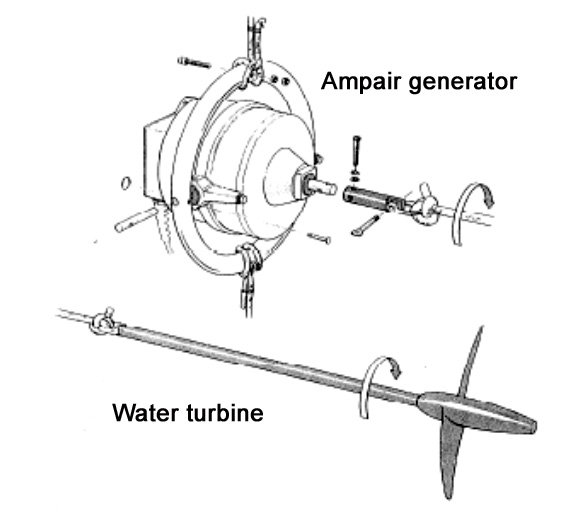
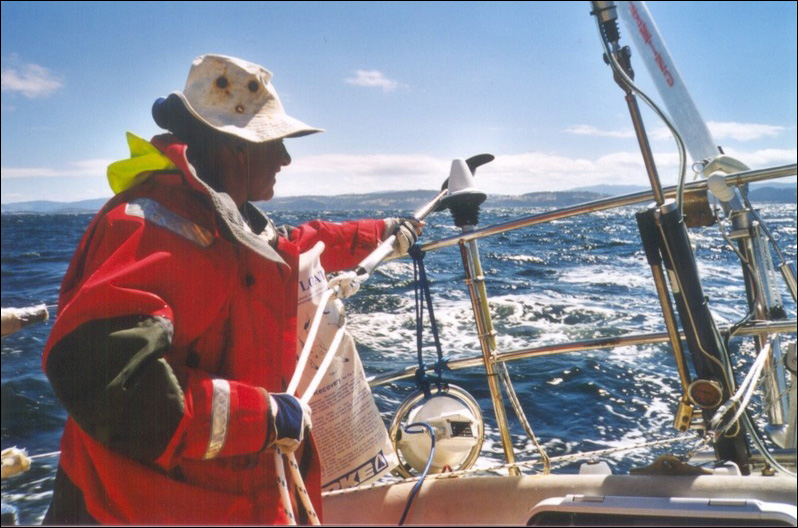
|
Electronics, Communications and Software
- Boat has SatcomC with Easymail (C –Email at www.xantic.net ) and GMDSS distress facility, Garmin 130 and 75 GPS + 2 battery operated Garmin handhelds(www.garmin.com ), GME Electrophone VHF with emergency aerial.
- New ICOM M802 HF radio with full GMDSS facilities and Pactor-3 modem installed Aug 04 (www.icom.com ) .
- Radio integrated with internal and handheld GPS and primary Panasonic CF18 Toughbook laptop (Specs here (PDF)) and backup Compaq nv1020 laptop. Capability to download internet pages while at sea.
- Both laptops have Sailmail with grib weather access (see www.pca.cc ), weatherfax, full SOB chartplotter navigation software (see www.digiboat.com.au ) and CMAP charts (www.c-map.com). Backups for all apps are carried separately. Both laptops have USB connection to integrated systems via multiport USB to Serial connector or can be connected directly to handheld GPS. Compaq has internal CD RW for re-install if needed. Separate CD RW drive carried for CF18.
- Category 1 radio compliance certificate issued Aug 04.
- AIS
|
|
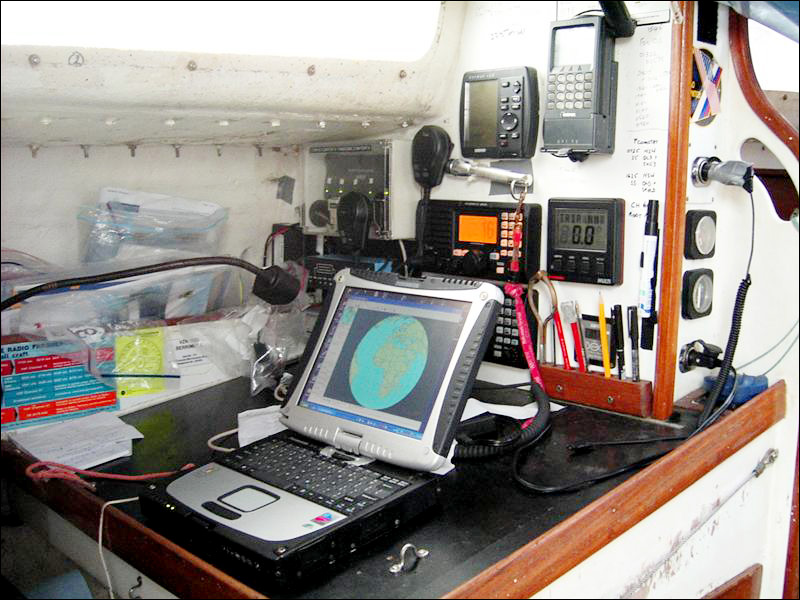 |
Navigation equipment & Charts:
- In addition to electronics, a sextant, tables, Merlin calculator and paper charts are carried. Both crew can use sextant.
- Publications and books:
- Ocean Passages for the World
- World Cruising Routes
- Charts: Full portfolio of charts for proposed route.
|
|
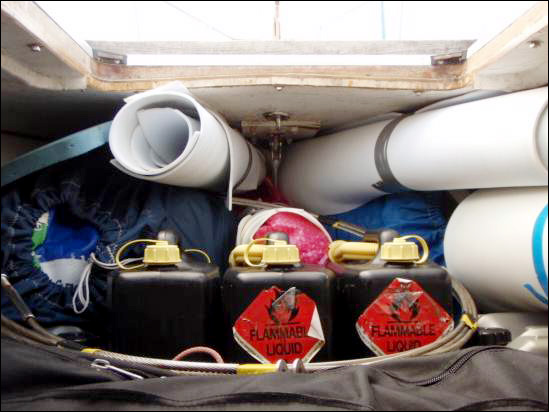 |
Safety gear & Medical
- Full Category 1 ocean racing inventory with compliance certificate valid until Aug 05. Renewed in UK. This includes harnesses, tethers, personal strobes, liferaft and EPIRBS and a 406mhz EPIRB
- Satellite phone with numbers programmed into it for emergency use. This is kept in a waterproof container with spare batteries and a hand held GPS
- Enhancements to first aid kit
- Dental and full medical checks for both crew
|
|
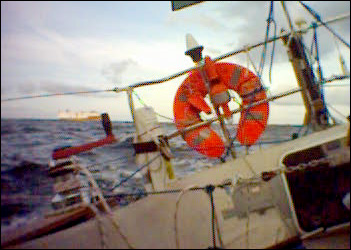 |
Interior
- 6mm foam insulation internally in saloon to reduce condensation
- Strengthened stormboards
- Interior barriers in forepeak
- Heavy plastic curtain to protect nav table (“Cone of Silence”)
|
|
 - The “Cone of Silence”
|
Food
Stores, fresh and other food, on board garden, spares*
- Chefsway (Chefsway Food Adventures, Moonah, Tasmania) dried meals sufficient for the full voyage are carried, in addition to other supplies. Chefsway food has been used by crew on long races and found to be easy to prepare and superior to canned and other dried products.
- Other dried, canned and shrinkwrapped food has been tested and used over the years and we carry sufficient for each leg.
Water
- Desalinator fitted (4ltr/hr, electric or manual) www.katadyn.com,
- [a 2nd watermaker?]
- Gutters on mainsail to catch rainwater
- The boat’s internal water tank holds about 150 ltrs and we have a supplementary 100 ltr ‘soft’ tank plus the desalinator.
|
|
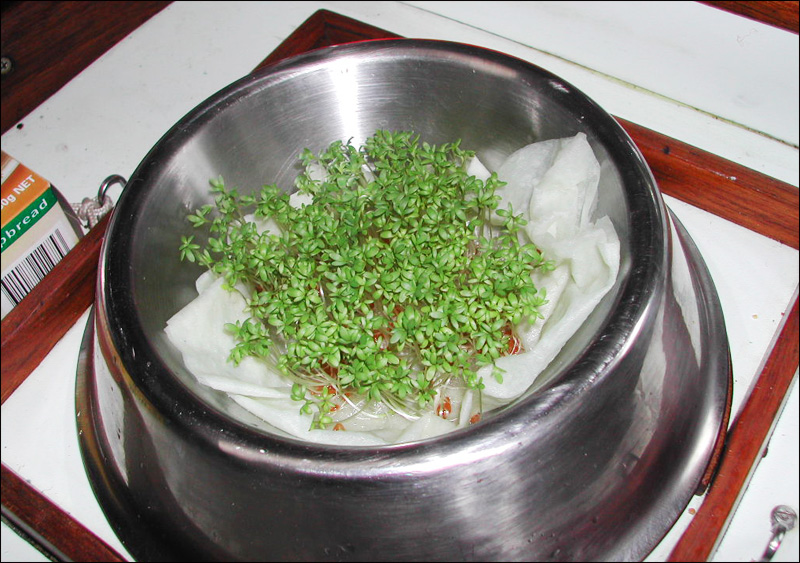 - Veggie garden in dogbowl
|
Essential clothing
Complete sets of cold weather clothing including Finisterre technical fleeces (www.finisterreuk.com ) plus Gill Ocean wet weather gear, Goretex gloves, goggles, etc.
Read also:
“Rant against snake oil” (Post of May 24, 2008: Alex Whitworth is raving about only being able to buy fashion colours for wet weather gear.)
Additional equipment:
- 90 metres 25mm anchor warp.
- Drogue for emergency steering and heavy weather
- 30 metres anchor chain and heavy shackles.
- Inflatable tender with outboard
- Mast climber
- 12v insulated cooler/warmer box for cooling the beer and raising the dough for breadmaking.
- Small camp oven and pressure cooker.
- Enhancement to tool kit – 12v drill, set of vice grips
- 12 v soldering iron + gas heated one
- Folding bicycle.
International regulations
(Customs, maritime law…)
- Visas obtained for all likely stopovers
- www.noonsite.com used to download all local requirements relating to international port entry, customs clearance and local regulations. Specific pages can be downloaded while at sea if needed.
Required qualifications
(and complementary skills such as celestial nav?)
Backup gear
- Identify the showstoppers
- 2 of all of them?
- Halyards
- Watermakers (with manual handle as well)
- Laptops and copies of all software and charts
- Satellite phones (and contracts?)
- Reading glasses – multiple
- Spares and manuals for engine, laptops, GPS, watermaker (spare membrane and O rings), software…
- Spare impellers for Ampair generator with
- 2-blade fixed propeller carried as spare
- Solar panels, wind generator to complement engine driven alternator
Land based crew
- Email contact all the way round via Sailmail or SatcomC with home, RORC, CYCA and ports of call.
- Satphone is available if all else fails.
|
|
 |
↑ BACK to TOP
|










